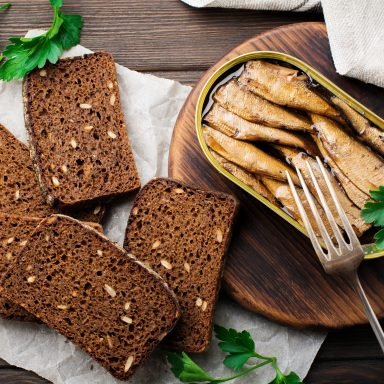
Ezekiel bread Recipe
Ezekiel bread is a nutrient-dense, whole-grain bread with a rich history, offering a deliciously hearty alternative to refined white bread, and it's perfect for those seeking a healthier, homemade option with a unique, earthy flavor.
Equipment
- Large mixing bowl
- Bread pan
- Strainer or colander
- Clean kitchen towel or cheesecloth
- Oven
- Measuring cups and spoons
Ingredients
- 1 cup wheat berries
- ½ cup spelt berries
- ½ cup barley
- ½ cup lentils
- ¼ cup chickpeas
- ¼ cup water
- 1 tablespoon honey
- 1 ½ teaspoons salt
- ¼ teaspoon ground cinnamon
- 1 tablespoon olive oil
- ¼ cup warm water
- 2 teaspoons active dry yeast
Instructions
Sprouting the Grains and Legumes:
- Rinse all the grains and legumes thoroughly. Place them in separate bowls and cover with water. Let them soak for 8-12 hours or overnight.
- After soaking, drain the water and place the grains and legumes in a colander or strainer. Cover with a clean kitchen towel or cheesecloth, and allow them to sprout for 12-16 hours, rinsing them every 8 hours.
Prepare the Dough:
- Once the grains and legumes have sprouted, blend them in a food processor or high-speed blender until a thick, sticky dough forms. Add water gradually if necessary to help the process.
- In a large mixing bowl, combine the sprouted grain mixture, honey, salt, cinnamon, and olive oil. Mix everything together, then add the warm water to activate the yeast.
- Sprinkle the yeast over the dough and let it sit for about 10-15 minutes until the yeast begins to foam.
Knead and Rise:
- Knead the dough on a floured surface for about 5-10 minutes, until it becomes smooth and elastic.
- Shape the dough into a loaf and place it in a greased bread pan. Cover the pan with a kitchen towel and let the dough rise for about 1-2 hours, or until it doubles in size.
Bake:
- Preheat your oven to 375°F (190°C). Once the dough has risen, place the bread pan in the oven and bake for 45-60 minutes, or until the bread sounds hollow when tapped on the bottom and has a golden-brown crust.
- Let the bread cool on a wire rack before slicing.
Related Video
Notes
- Sprout the Grains Well: Ensure the grains and legumes have fully sprouted before using them. Under-sprouted grains can affect the bread's texture and taste.
- Add Variety: Experiment with different legumes, like peas or mung beans, for unique flavors.
- Watch the Rise Time: Be patient with the rising time. If your kitchen is cold, consider placing the dough in a warm area (like near the oven) to help it rise properly.
- Don't Skip the Cooling: Let the bread cool completely before slicing to avoid it becoming too doughy or soggy.
- Use Fresh Yeast: Always check the expiration date on your yeast. Fresh yeast will help the bread rise better and give you a lighter texture.
Nutrition
Nutrition Facts
Ezekiel bread Recipe
Serving Size
50 g
Amount per Serving
Calories
120
% Daily Value*
Fat
1
g
2
%
Saturated Fat
0.2
g
1
%
Polyunsaturated Fat
0.4
g
Monounsaturated Fat
0.3
g
Sodium
190
mg
8
%
Potassium
120
mg
3
%
Carbohydrates
24
g
8
%
Fiber
4
g
17
%
Sugar
2
g
2
%
Protein
5
g
10
%
Vitamin C
1
mg
1
%
Calcium
20
mg
2
%
Iron
1
mg
6
%
* Percent Daily Values are based on a 2000 calorie diet.
Tried this recipe?Let us know how it was!